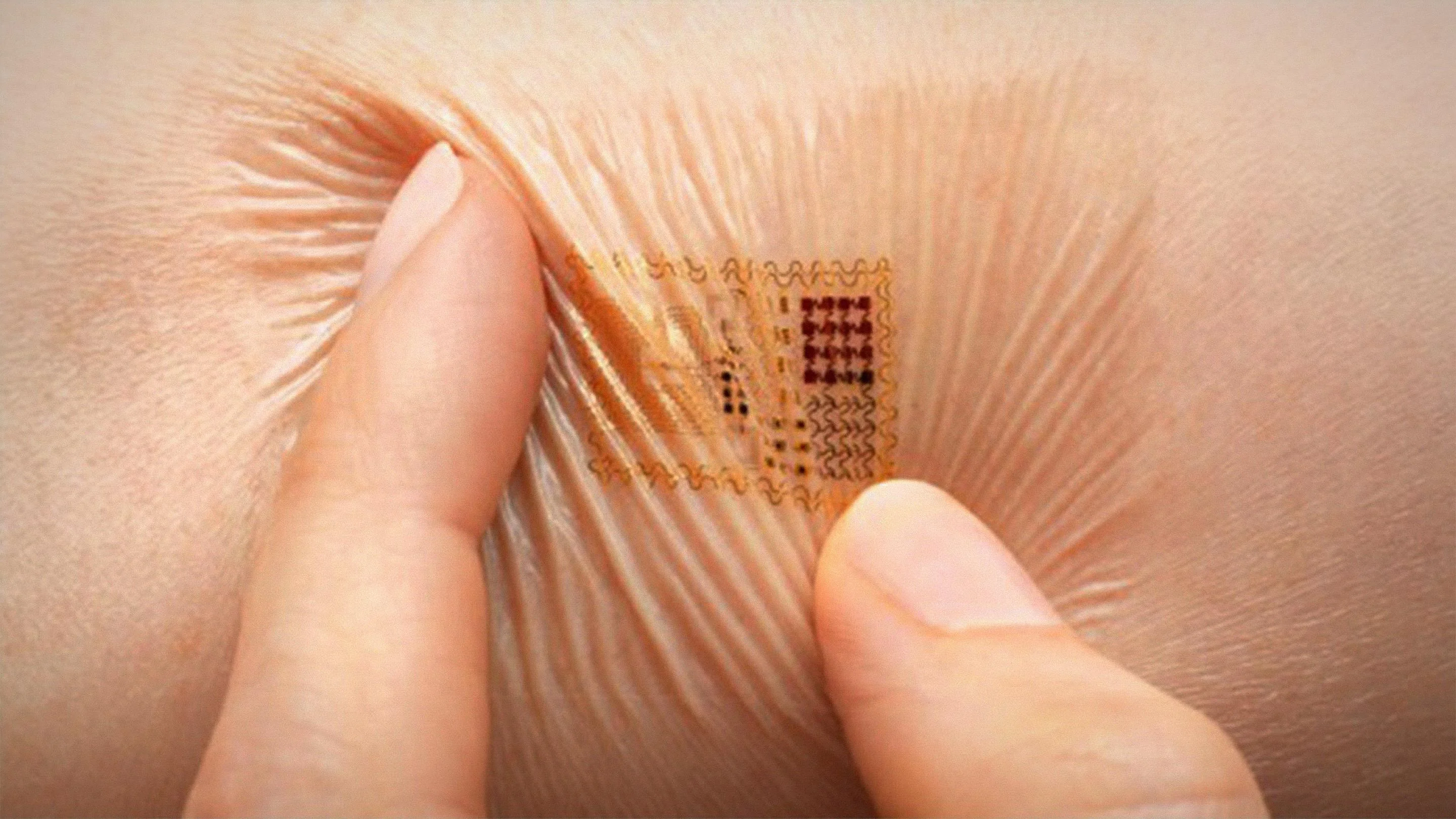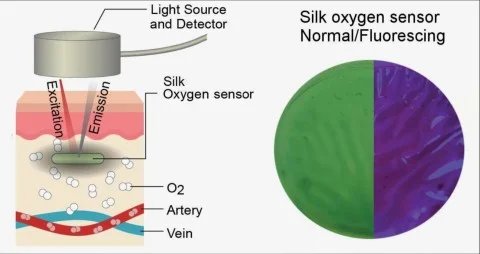Scientists have created an implant for blood analysis

A team of Tufts University of Massachusetts researchers have developed an implant that monitors blood oxygen saturation levels. The dimensions of the sensor do not exceed the size of an ordinary coin, which makes it possible to place it under the top layer of the skin, like a tattoo.
The implant is made from fibroin, which is a protein derived from silk. Fibroin is compatible with a living organism, and is also able to decompose. In addition, this protein does not change the chemical properties of the substances added to it, which in this case made it possible to add the substance PdBMAP to it, which emits a glow when exposed to near infrared light. The duration of the glow depends on the amount of oxygen in the immediate environment - the more oxygen, the shorter the duration of the glow. Experiments on the introduction of the implant were carried out on rodents, and as a result, the researchers found that the duration of the glow fully reflects the degree of blood oxygenation shown by specialized equipment.

According to one of the main creators of the implant, Thomas Falcucci, the device can be used to monitor people with chronic diseases who need to be monitored for a long time without the usual clinical conditions. In the future, several such devices will allow simultaneous monitoring of several blood components.
At the end of the work, the sensor will be able to dissolve on its own in the body without harm to health. If necessary, it is able to stay under the skin for up to one year.
The implant is made from fibroin, which is a protein derived from silk. Fibroin is compatible with a living organism, and is also able to decompose. In addition, this protein does not change the chemical properties of the substances added to it, which in this case made it possible to add the substance PdBMAP to it, which emits a glow when exposed to near infrared light. The duration of the glow depends on the amount of oxygen in the immediate environment - the more oxygen, the shorter the duration of the glow. Experiments on the introduction of the implant were carried out on rodents, and as a result, the researchers found that the duration of the glow fully reflects the degree of blood oxygenation shown by specialized equipment.

According to one of the main creators of the implant, Thomas Falcucci, the device can be used to monitor people with chronic diseases who need to be monitored for a long time without the usual clinical conditions. In the future, several such devices will allow simultaneous monitoring of several blood components.
At the end of the work, the sensor will be able to dissolve on its own in the body without harm to health. If necessary, it is able to stay under the skin for up to one year.





There are no comments yet :(